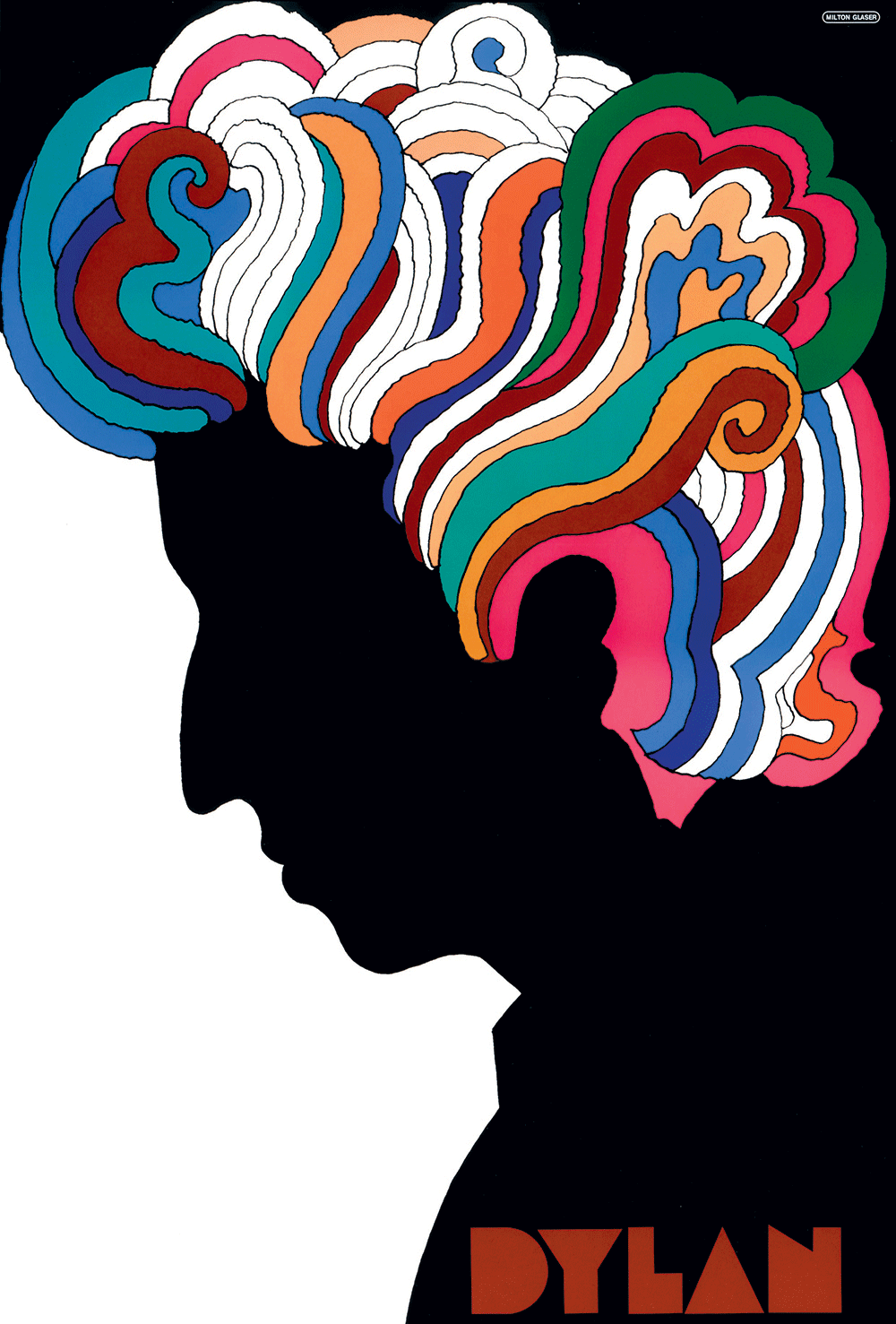« Editor's Picks
Milton Glaser: The Prophetical Guide
 Questions, interviews, and personalities often equal the lame, useless, and banal. What is real always changes you if you are teachable. Asking the right questions feels impossible at times. It leads me to realize that life itself often disguises itself as just that, a series of questions, such as what is real and what is not? Questions related to reality, art, and philosophy often swim in the same mind soup.
Questions, interviews, and personalities often equal the lame, useless, and banal. What is real always changes you if you are teachable. Asking the right questions feels impossible at times. It leads me to realize that life itself often disguises itself as just that, a series of questions, such as what is real and what is not? Questions related to reality, art, and philosophy often swim in the same mind soup.
Now and then we obtain a guide who can give us either a word of encouragement, or point a finger for us in the right direction. Guides are rare. We all need them. They teach us to see.
Milton Glaser is one of those guides.
More than just a renowned international designer; Glaser’s design matches his art through multiple venues including printmaking, posters, countless editorial works for major newspapers and magazines, and much more. His writing covers essays, lectures and editorials. His insight into analyzing art is on a par with Robert Motherwell. Now at age 88, Milton Glaser has shown the world that he appears to also be a prophet of America’s politics, values and ethics. Kandinsky would surely say he is on the top of his “triangle of influence” as a guide of others.
Milton Glaser was educated at Manhattan’s The High School of Music & Art, graduated from the Cooper Union in 1951 and later, via a Fulbright Scholarship, the Academy of Fine Arts in Bologna under Giorgio Morandi with whom he later shared a show in 1989. He was one of the founders of Push Pin Studios in 1954 that influenced the direction of world design culminating in an exhibition at the Louvre Museum.
Former President Barack Obama presented the National Medal of Arts to ten recipients for their outstanding achievements and support of the arts. The National Medal of Arts is a White House initiative managed by the National Endowment for the Arts, the nation’s highest honor for artistic excellence. Milton Glaser was one of those recipients.
BY DANIEL BONNELL
Daniel Bonnell - Your work over the decades rises to a level of visual linguistics where it becomes a language unto itself. The pieces you produced for the Rubin Museum of Art appear to voice this language, especially with your two pieces Light Tantra and Dark Tantra. Did this same creative language come from studying with Giorgio Morandi and the beautiful simplicity of his compositions?
Milton Glaser - It’s very difficult to be objective about one’s influences, largely because in most cases they are invisible; although, retrospectively, relationships can be discovered and similarities pointed out. I think in my own case, a broad interest in all forms of art history, regardless of their stylistic characterizations, led me to believe that all historical visual occurrences were useful to my own understanding of form and meaning. In a stylistic sense, I see no hierarchical difference between a cave painting and a Whistler etching. My study with Giorgio Morandi, most importantly, informed me that work itself was the core of my being, and that my commitment to myself came, essentially, through that work.
D.B. - Can you share with me one or more of the most valuable insights that you gleaned from studying with the renowned Italian painter Giorgio Morandi?
M.G. - The fact that Morandi’s essential character never seemed to waiver in the face of fame or money protected and defined his integrity and accomplishment.
D.B. - You state, “The interval between looking and seeing is one of communication’s most profound issues… certainty is a closing of the mind. To create the new requires doubt.”1 Your theme of darkness underscores this thinking in your limited edition prints, Dark Landscape, Dark Fruit with Highlights and Dark-Eyed Woman. Doubt requires risk; how do you decide if the risk failed?
M.G. - Risk is essential to any form of learning. If one does not fail, how can you measure success? Embracing risk requires courage and above all persistence. Failing in one’s own eyes can be either discouraging or provocative. The ego enjoys success and fears admission of failure but controlling the ego is another thing we can talk about later.
D.B. - Back during the George W. Bush administration you wrote an essay on lying and ethics. I have lifted a section of that essay here: “When people believe that their government systemically lies to them they become cynical. Cynicism breeds apathy and a sense of powerlessness that causes people to withdraw from public life. It is not coincidental that less than half our population votes. If only 44% of our country vote and we are equally divided ideologically, it means that 20% of the electorate control the fate of our nation-this has become a profound threat to the future of our republic and democracy itself. We can only call this a systemic scandal and observe that those in power have done very little to change the condition. Which raises one last question. From our government’s point of view, have we become the “other”? 2
It appears that 20% of the electorate put President Trump into office. Your prophetic analysis proved to be correct. Do you see any change in the ethics of the artists today becoming change makers for influencing society or have we simply joined in to become the “other”?
M.G. - I must say, my question is more relevant now than ever. Largely because of Trump, the passivity that arises out of powerlessness has spread throughout the world. The contempt that the powerful have for ordinary people is overwhelming and relentless. Not to mention, the consistent lying and misrepresentation that is fed to the entire world.
It’s hard to understand the time one lives in. Certainly, it has become increasingly popular for artists and others to demonstrate their opposition to the existing condition. Whether these gatherings, protests, posters and other like activities will affect those who control our lives and civilization itself is yet to be seen. For artists, the need to be on the side of fairness is a core definition.
D.B. - In an essay on The Last Supper by Leonardo da Vinci you state: “The human brain is a problem-solving organ, a characteristic that probably is at the center of our dominance over other species. The brain frequently remains inert until a problem is presented to it. In the case of The Last Supper, the profound ambiguity it contains alerts and stimulates the brain into action. Leonardo clearly believed that ambiguity was a way of arriving at the truth. As a result, the painting moves us in a deeper and more profound way than any direct statement.”3
Would you then determine that ambiguity is the trickster of beauty?
M.G. - Ambiguity has an essential role in all art. It creates the opportunity for the mind to make connections and actually examine what is presented to it. Ambiguity amplifies the thinking process itself. Although, I must admit that not all ambiguity operates on the same level.
D.B. - In your essay Dark and Light-The Strange Case of the Decline of Illustration, you state: “We have lost our sense of what is real, and replaced it with an addiction to the virtual reality created by television, entertainment, and advertising.”
To follow this path of what is real, you further state in the same essay, “The deepest role of art is creating an alternative reality, something the world needs desperately at this time. Everyone here today chose to be on the side of Eros, that is you’ve devoted your life of making things, rather than controlling things. I used to feel that it was strange that artists are self-anointed. Now I realize it could not be any other way because above all, art is a view of life itself. It cannot be given by others or taken away by dealers or marketing men. Real artists are always working for nothing because they don’t see their essential role in society as being simply to exchange goods. They turn up first in the anti-war demonstrations, not because they lack patriotism, but because they revere life.”
After reading this statement I think of various artists such as Leon Golub who raised our awareness of terrorism, Luc Tuymans refusing to represent the representable in his untitled work depicting 9/11, and Roman Opalka spending a lifetime depicting the awareness of time. I also think of the photographer Duane Michaels who asks important political, social, and ethical questions. As contemporary artists, what individual attribute or attributes need to emerge today?
M.G. - For all of us who aspire to be, or call ourselves, artists, one uniformly characteristic attribute emerges. They care about others as much as themselves and their work on the highest level serves to create a sense of commonality and agreement. The work itself may not be agreeable but engaging people’s attentiveness, we all have something to share. I’ve said it before, but my perception is that art is a Darwinian device to help the human species survive. In the presence of art we are least likely to kill one another, or to feel that we are all self-serving.

Milton Glaser, I Love New York, 1977 (designed for New York State Department of Economic Development).
D.B. - How do you connect your famous I heart (Love) NY design with becoming a worldwide symbol that is used more than any cross cultural logo in history?
M.G. - To begin with, I fully believe that everything in the world is connected. There are no independent events. In every problem you’re given as a designer the most important discovery is what the hidden relationship is. It’s always there. Once discovered, the answer to design problems are inevitable. Once I discovered I could change a noun into a verb (a heart into “love”) the image materialized. Apparently, the world was waiting for that connection to be made and after 40 years, I see it on the streets of New York at least five times a day.
D.B. - You were born in 1929. You’re 88 years must have gleaned patterns from a metanarrative perspective. Can you share with us the patterns of life that you have observed such as patterns of reality, patterns of great art?
M.G. - Simply said, in the world of art there is no reality. There is only abstraction of reality. Sometimes it is narrative, referential and illustrative. Other times, it is abstract and symbolic. It’s all one thing. The discovery of what is ‘real’ is overwhelming and occurs rarely.
Notes
1. Milton Glaser. In Search of the Miraculous or One Thing Leads to Another. New York: The Over Look Press, 2012.
2. Dark and Light. The Strange Case of the Decline of Illustration, lecture given at ICON Illustration Conference, Philadelphia PA on June 29, 2003. www.MiltonGlaser.com.
3. Ibid
4. “Duane Michals by David Seidner,” Bomb Magazine. Artists in Conversation. Issue 20, Summer 1987.
Daniel Bonnell is an artist, writer and educator, as well as author of the book Shadow Lessons. The text chronicles an artist’s unexpected journey into an inner-city, at-risk, high school culture. He has exhibited his art in a variety of venues, including St. Paul’s Cathedral in London, St. George’s Cathedral in Jerusalem, Washington National Cathedral in Washington, D.C., and the Cathedral of St. John the Divine in New York City. His eclectic studio instructors included painter Ed Ross, photographer Ansel Adams and designer Milton Glaser.







































Leave a Reply
You must be logged in to post a comment.